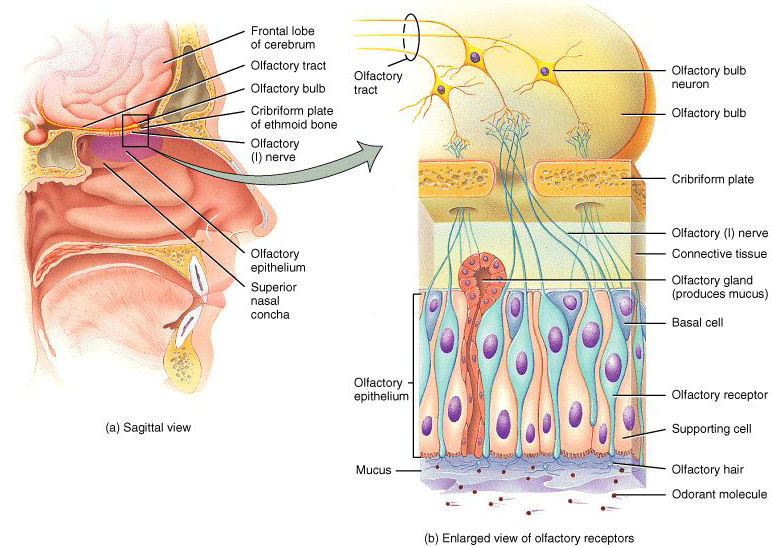209.WHAT IS AN ODOR?
Everybody likes pleasant odors—the perfume of flowers, or the aroma of a cake baking. But a disagreeable odor can be quite unpleasant. The strange thing is that the amount of odor in both pleasant and unpleasant cases can be very, very tiny! Did you know that we can detect the odor of certain substances if only one part of 30,000,000,000 parts by weight is present in a given weight of air? And this is true of man—whose sense of smell is a fraction as good as that of a dog!
What is it that produces what we call an odor? We detect an odor when a chemical substance comes in contact with certain nerve endings. This substance must be in the form of a gas or it couldn’t travel through the air. This is why we can smell things at a distance.
The cells for smelling are in the hairs that grow in the mucous membrane in the nose. These endings cover a small area in the upper part of the nasal cavities. They are so arranged that when we breathe we draw the air over them. But if we deliberately want to smell something, such as a flower, we have to sniff. This directs the air right to the area.
In order for anything to produce an odor, it has to be either volatile, that is, in motion, or brought to us in some substance that is in motion. When it reaches the smelling area in the nose, it produces a nerve current that travels to the brain, where we interpret the smell.
There are six types of odors that we can detect: flowery (rose, violet, etc.); spicy (lemon, apple, etc.); burnt (coffee, etc.); rotten (rotten eggs, cheese, etc.); and ethereal (alcohol, benzine, etc.).
We often confuse smell with taste because the gaseous particles of many of the foods we eat reach the receptors for smell as we eat. For example, if you couldn’t smell the coffee you drink, it wouldn’t have the familiar taste. This is also why food often seems to lose its taste when you have a cold. Your sense of smell is blocked up during a cold, and this has an effect on the taste!



Leave a Reply